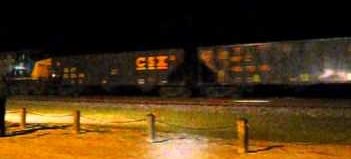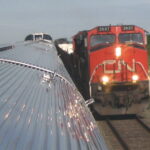Amtrak #850 Left Out in the Cold.
Airline pilots are only permitted to be work for a specific number of hours. In most instances, a two-person crew can only be on duty for no more than ten hours in a 24-hour period.
It’s the same for a railroad engineer—in fact, for the entire operating crew, which includes the engineer, the assistant engineer and the conductors. They can only be on duty for twelve hours.
When an Amtrak operating crew reaches their limit, it’s said that they “time out” or “go dead”. It’s the same for the engineers in a freight locomotive. And there’s no fudging, either. When the clock says it’s been twelve hours, the crew must shut everything down at that moment. Then it’s up to the railroad to find a relief crew and get them to that train. Nothing moves until the new guys show up.
But sometimes it does appear that there are people working for the freight railroads who take perverse pleasure in making life difficult for Amtrak and that, of course, includes Amtrak passengers.

For instance, this past Monday night, an eastbound CSX freight had just gone through Crawfordsville, Indiana, when the crew “timed out”. According to information I’ve received, they could have stopped in Crawfordsville or, as an alternative, moved off onto a siding just before they were about to “go dead”.
Instead, they blocked the main line for more almost four hours while CSX located a fresh crew and they could find their way to where the train had stopped. A routine exercise for freight railroads.
But it was sure a serious inconvenience for passengers aboard Amtrak train #850, the Hoosier State, en route from Chicago to Indianapolis. They were stuck behind that stopped freight train for more than three hours, and those expecting to reach Indianapolis just before midnight didn’t get there until 2:43 a.m. All during that long wait, they were just 40 miles from their destination.
What do you suppose the CSX crew and the dispatcher were thinking? They knew Amtrak was behind them, of course, but it’s pretty clear that no effort was made to let the Hoosier State pass before they “went dead”. Let me assure you, this kind of stuff occurs frequently all over the country.
Ironically, the Surface Transportation Board has been meeting in Washington to consider a new “policy” that would give more flexibility to the freight railroads when it comes to deciding whether to give “preference” to their freight trains or to Amtrak.
How’s that for timing! Look for vociferous objections from NARP.



